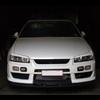How Do You Sense Your Shift Points.
93 members have voted
Announcements
-
Similar Content
-
Latest Posts
-
By Dose Pipe Sutututu · Posted
Literally looks like direct port nitrous haha -
By TurboTapin · Posted
They are in fact just nozzles. They are there only to produce a spray pattern and limit flow. The injector itself is what I use to control flow to the 7x nozzles. My old system had no injector and only PWM the pump. This lead to a lot of inconsistencies, and poor atomization at low pressure when the pump was ramping up. -
With the system, once you drive it for a bit, and before you turn the car off, does the car fix its date and time? When you say the date is wrong, what date does the vehicle think it is, and does it always show the same date? My thoughts from a process driven view is; The system may be defaulting to a standard start date/time. The main reason you'd typically see this occuring, is the system is losing its constant/backup power supply. If its always defaulting to the same date/time at start up, and especially if it fixes itself while driving, I'd say either the non volatile memory has an issue, or the power supply to the volatile memory that stores this information. The other thing I'd check is if there is anywhere in the system you can adjust the date and time from. If the date/time is still moving forward since it wished you happy new year, then it is 100% possible the system has just had a bit of data corruption occur, and you likely need to find a way to reset the date/time in the vehicle.
-
Scissor Jacks are an accident waiting to happen, the only time they should be used are in an roadside flat, even then a tyre and rim should be placed underneath
-









Recommended Posts
Create an account or sign in to comment
You need to be a member in order to leave a comment
Create an account
Sign up for a new account in our community. It's easy!
Register a new accountSign in
Already have an account? Sign in here.
Sign In Now